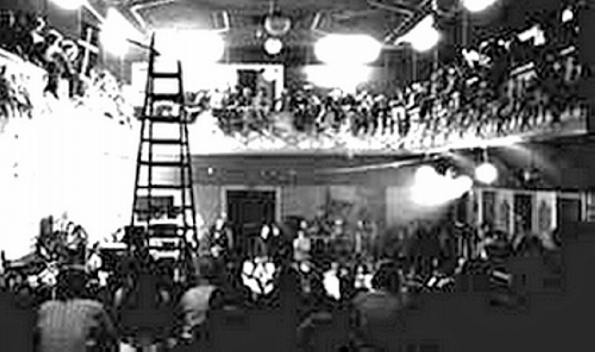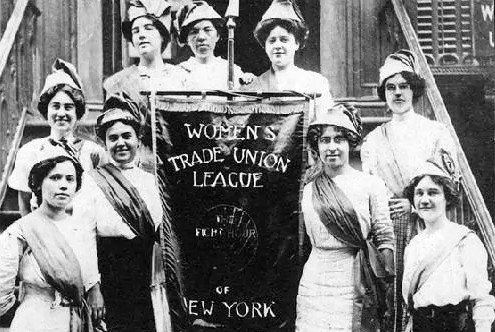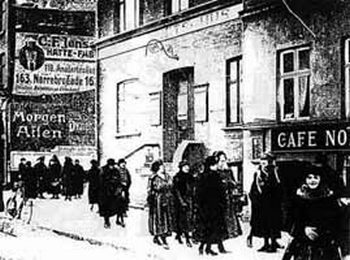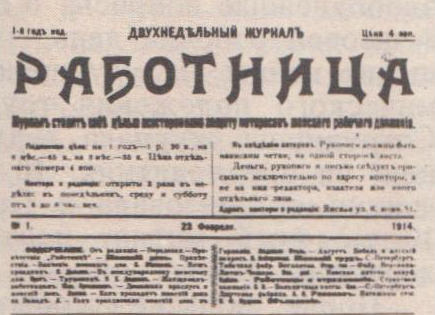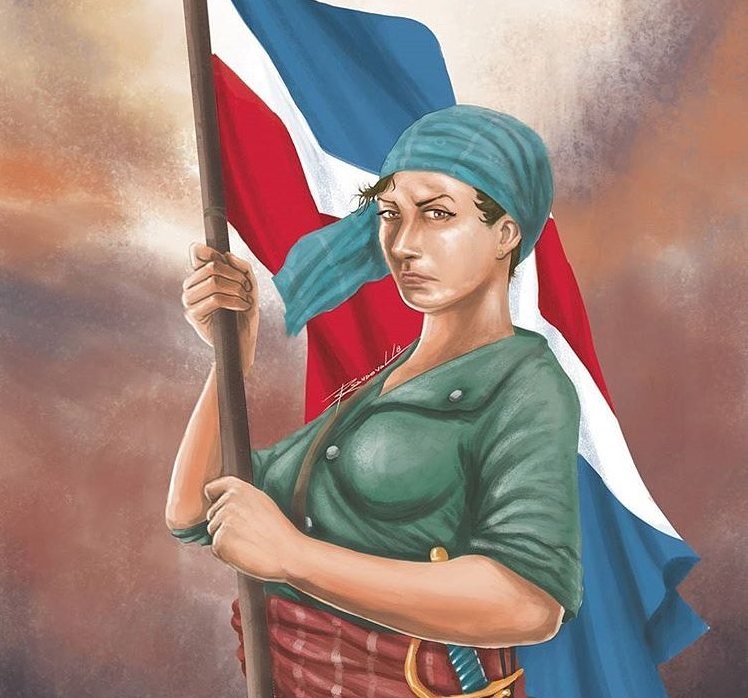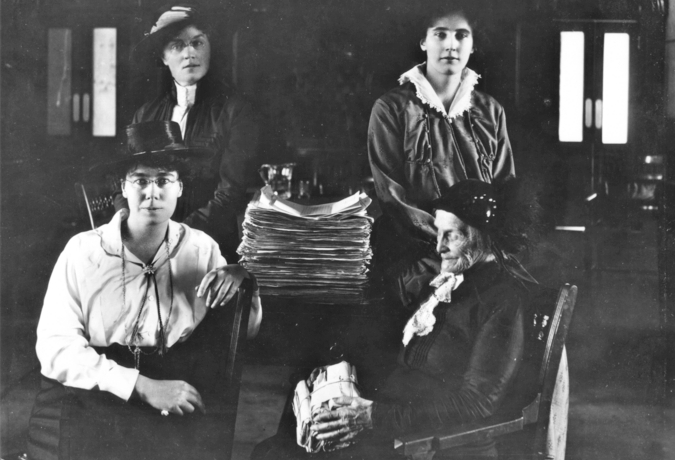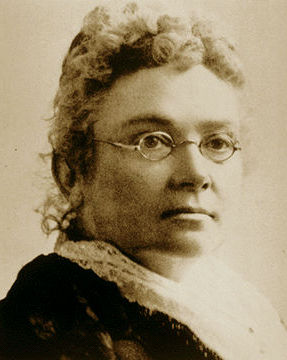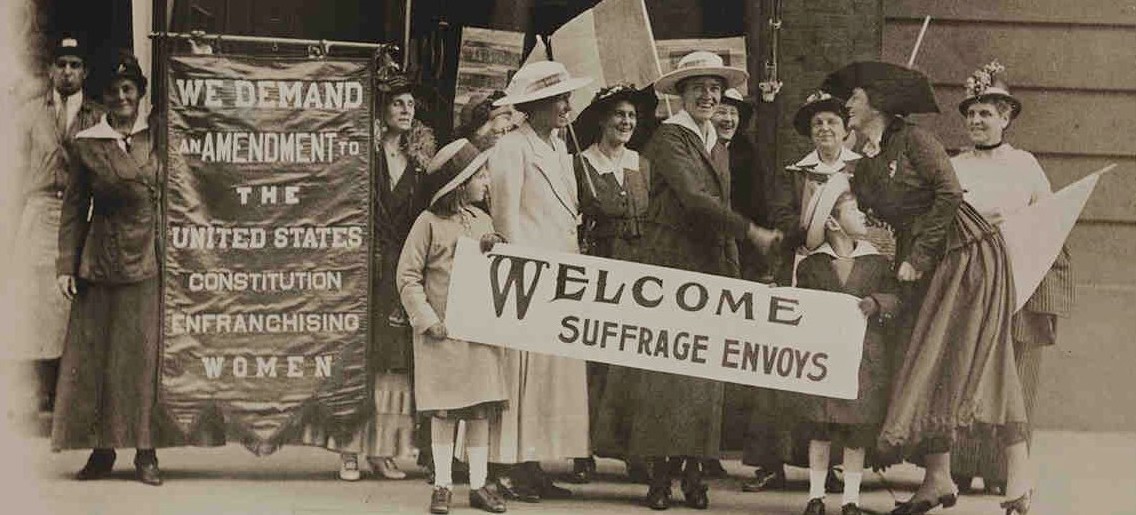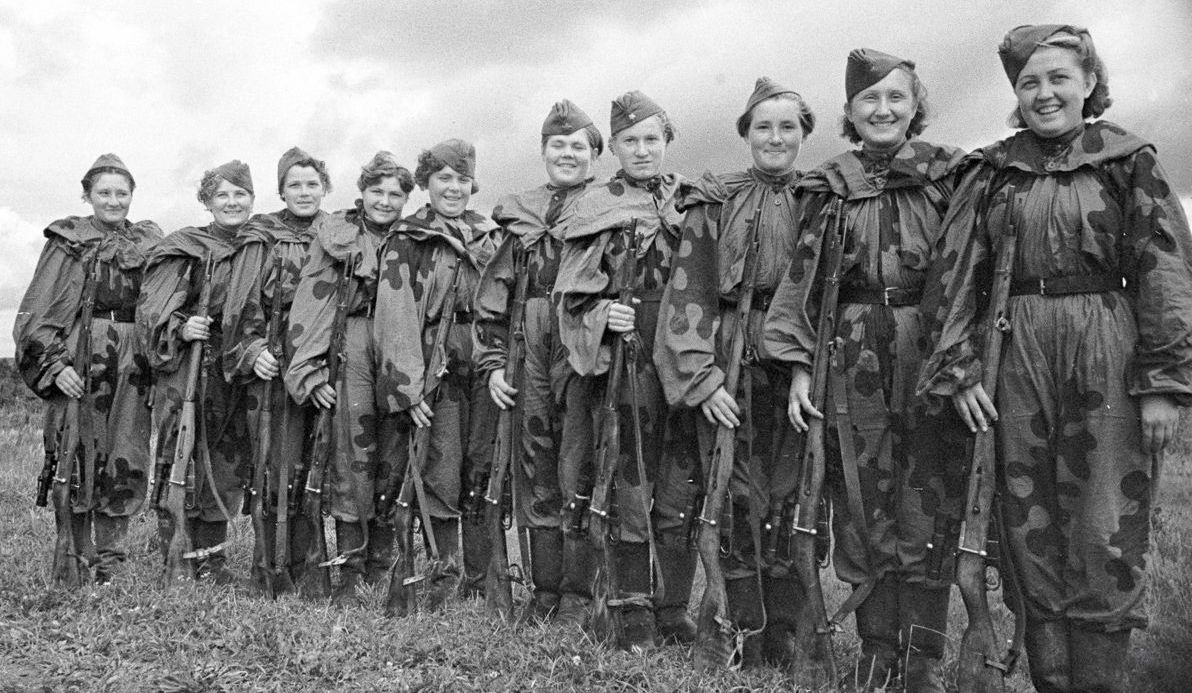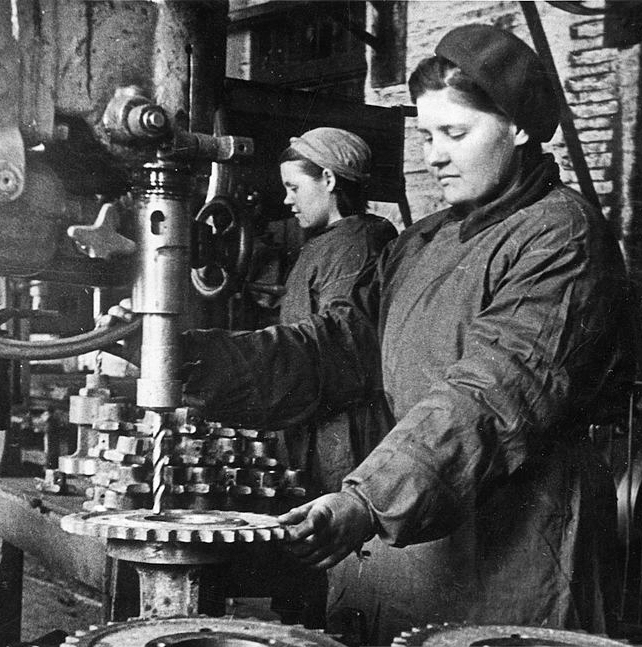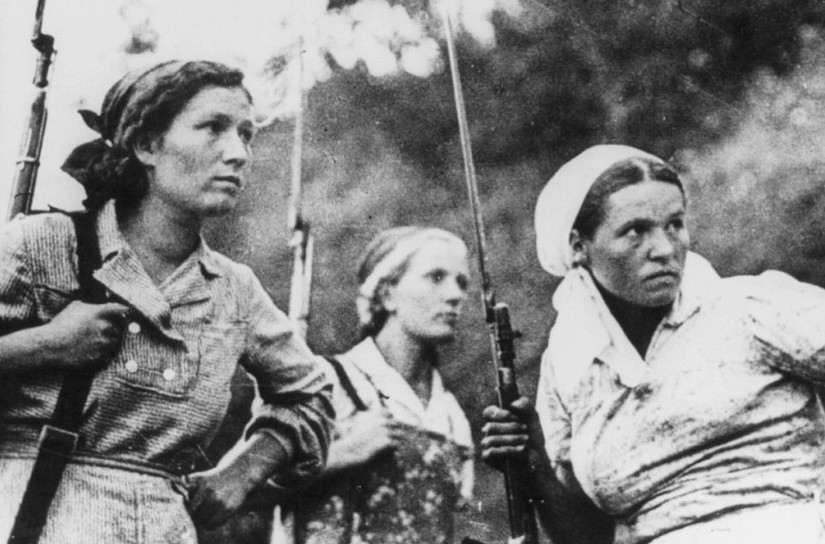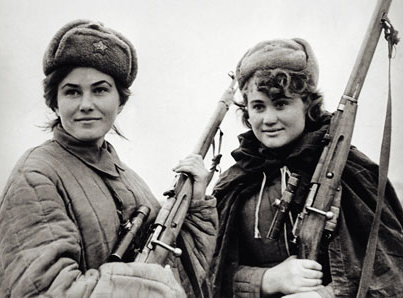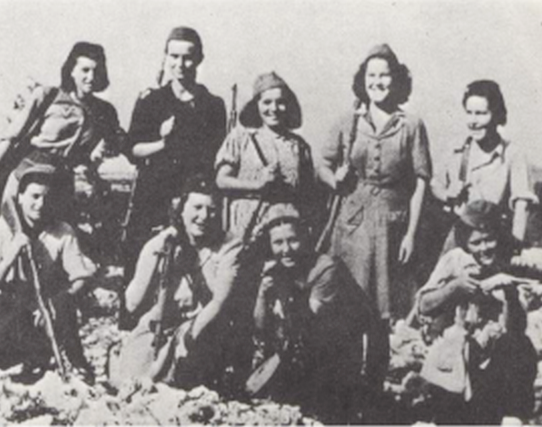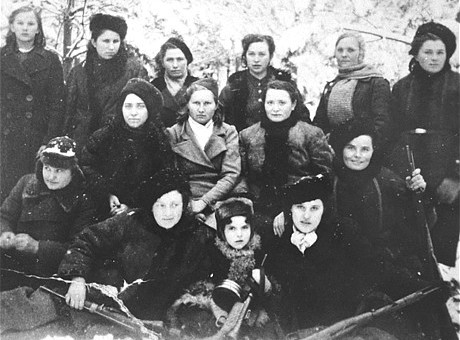
International Women's Day 2020 Women in
the Front Ranks of the Fight On the occasion of March 8, 2020, TML Weekly sends warmest militant greetings to all the women fighters in the ranks of the Communist Party of Canada (Marxist-Leninist) and to the women of Quebec, Canada and the world who are in the front ranks of every historic fight for peace, freedom and democracy. This is, essentially, a fight for the empowerment of the people, not the rich. Wherever the struggle to humanize the natural and social environment is being waged, women stand second to none. On this International Women's Day 2020, TML Weekly dedicates this supplement to the fighting women everywhere. Throughout the colonial, anti-slavery and anti-imperialist periods, women have always been at the forefront of historical battles. In each era, they have addressed the conditions they faced and have taken action to oppose what blocked their affirmation and the birth of the New. Today, women are claiming their rights as women, as those who give birth to the future generation, and as workers, opposing all forms of exploitation and oppression, especially the exploitation and oppression of the most vulnerable, including migrant workers. Women are fighting as human beings, for the right to a livelihood at the standards a modern society requires, housing, health, education, and a guaranteed safe and decent retirement. Women are standing up as members of society, affirming their right to participate and decide on all matters that concern them. This is what is necessary to exercise their humanity and their womanhood and to participate in all aspects of life. Women around the world bear the brunt of the global neo-liberal anti-social, anti-national offensive, imperialist sanctions, aggressions and wars and are resisting and fighting to change the situation for the benefit of the people. The domination of the financial oligarchy does not allow women to affirm themselves and eliminate the obstacles and brutal violence that it imposes. Women demand that when they say No! their No! is effective and real. Each of these struggles highlights the conflict that exists between the women's movement and women's aspirations and the current political authority, and also highlights the urgent need for women to empower themselves so as to implement the solutions for which they are fighting. This is an historical turning point which women address every day and especially on March 8, International Women's Day. Using their words, their arguments, their denunciations and actions, women are demanding a change in the direction of the economy and democratic renewal. In this regard, the social consciousness of women plays a crucial role in advancing society's demands for peace, security, justice and the humanization of the natural and social environment. On the occasion of International Women's Day 2020, TML Weekly is publishing this supplement to highlight the heroic role of women in the fight of humanity for peace, freedom and democracy. Contrary to many official accounts that seek to marginalize women to secondary positions in these historic struggles for human progress, women have been, not "assistants," but courageous fighters in the front ranks of humanity's striving for empowerment. Origins of International Women's Day
|
|
|
1914: The first issue of Rabotnitsa (The Woman Worker), a journal for working class women, is published in Russia. The Bolshevik Central Committee creates a special committee to organize International Women's Day. Meetings are held in the factories and public places to discuss issues related to women's oppression and to elect representatives to carry forward the proposals from these meetings in the new committee.
1917: In Russia, International Women's Day is a time of intense struggle against the Czarist regime. Workers, including women workers in textile and metal-working industries, are on strike in the capital city St. Petersburg. On March 8 (February 23 on the Julian calendar), thousands of women factory workers in St. Petersburg strike for bread and peace. They demand, "Bread for our children" and "Return our husbands from the trenches." It marks the beginning of the February Revolution, leading to the abdication of the Czar and the establishment of a provisional government, which later makes the franchise universal and recognizes equal rights for women.
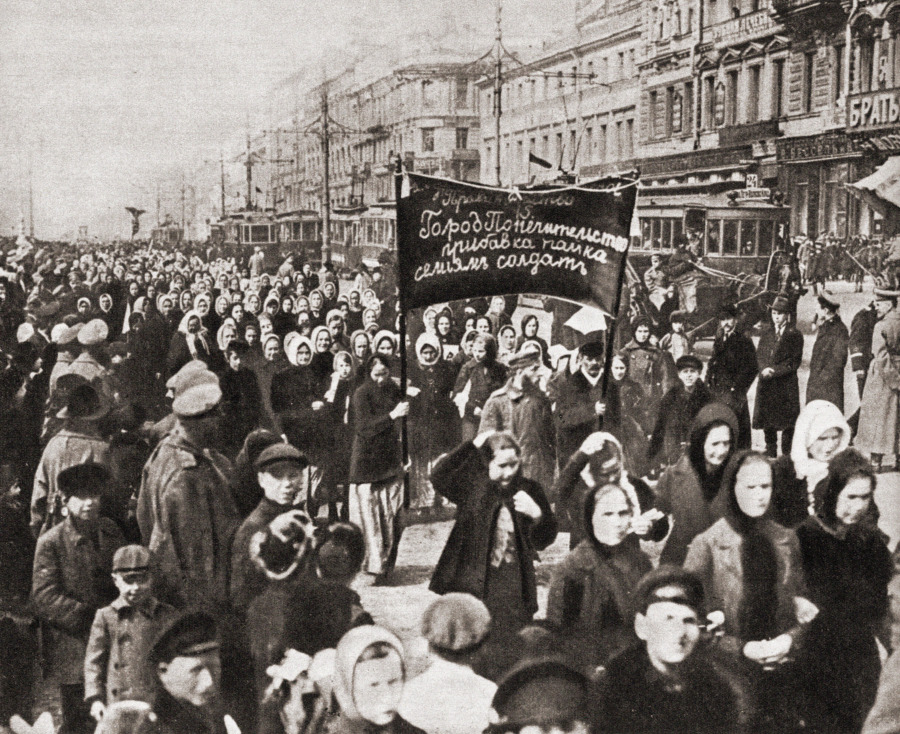
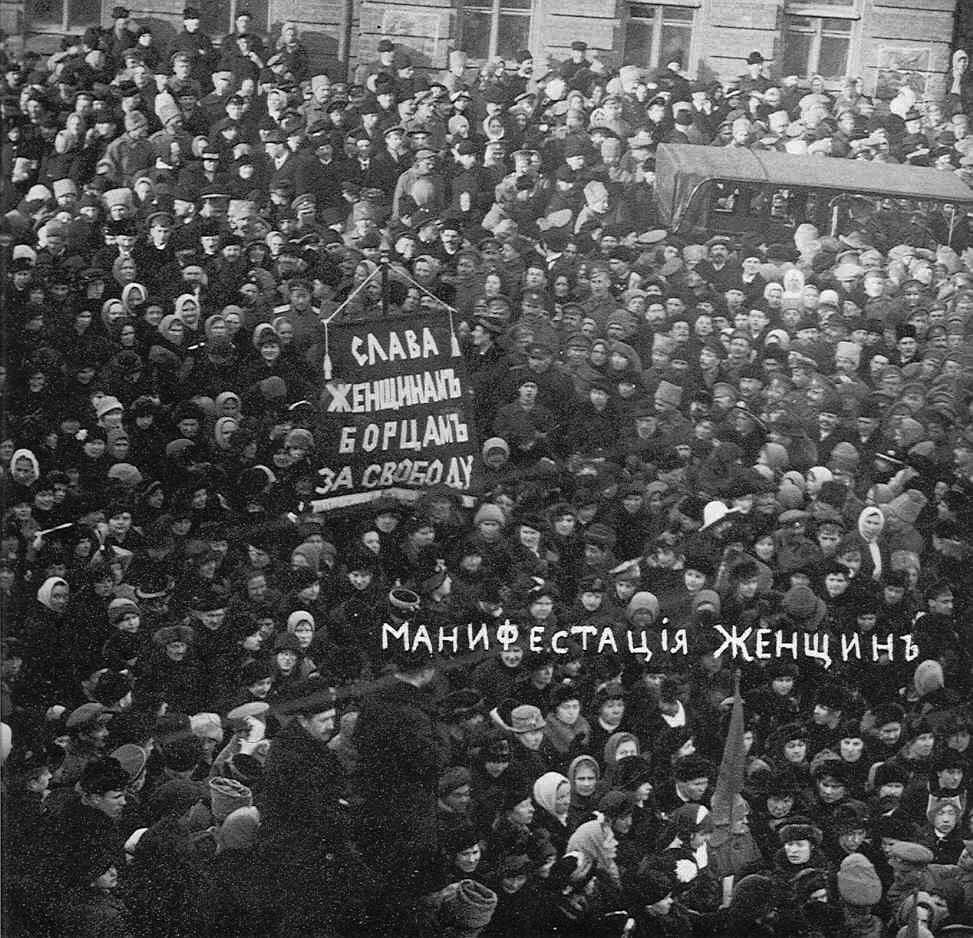
On International Women's Day 1917, thousands of women factory workers
in St. Petersburg strike for bread and peace.
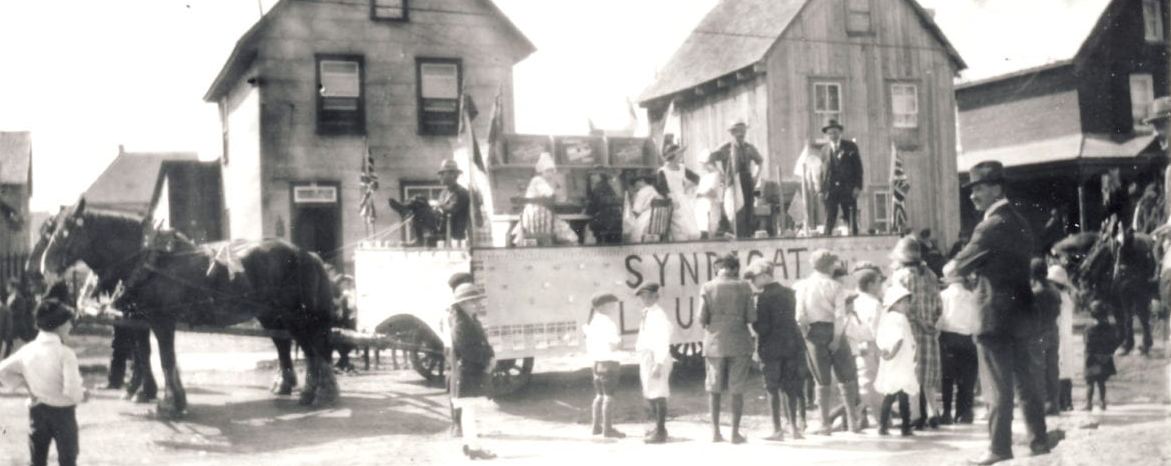
Strike by the women factory workers at the Eddy Match Company in Hull,
Quebec, 1919.
|
|
1920:
V.I. Lenin has an important discussion with Clara Zetkin, which she
recounts in the pamphlet Lenin on the Women's Question,
where he sets out the necessity for "a powerful international women's
movement, [established] on a clear theoretical basis." He recalled the
experience of the role of women in the Russian Revolution, saying in
part:
"In Petrograd, here in Moscow, in other towns and industrial centres
the women workers acted splendidly during the revolution. Without them
we should not have been victorious. Or scarcely so. That is my opinion.
How brave they were, how brave they still are! Think of all the
suffering and deprivations they bore. And they are carrying on because
they want freedom, want communism. [... ] It shows the capacity of
women, the great value their work has in society. The first proletarian
dictatorship is a real pioneer in establishing social equality for
women. It is clearing away more prejudices than could volumes of
feminist literature [...]."
1921:
March 8 becomes the official International Women's Day when Bulgarian
women attending the International Women's Secretariat of the Communist
International propose a motion that it be celebrated around the world
on this day. The date is chosen to honour the women in the Russian
Revolution, recognizing their role as a contribution to the struggle of
women for their emancipation internationally.
1928: The
first International Women's Day rally is held in Australia. It is
organized by communist women to demand an eight-hour work day, equal
pay for equal work, paid annual leave and a living wage for the
unemployed.
1937:
Spanish women demonstrate against the fascist forces of General
Francisco Franco to mark International Women's Day.
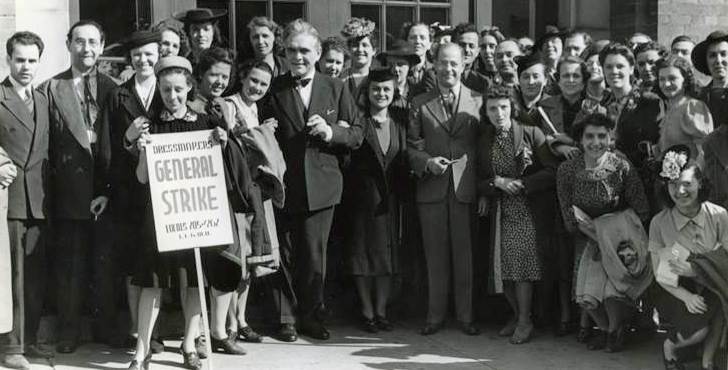
Strike by garment workers in Montreal, 1937.
1943:
Italian women mark International Women's Day with militant protests
against fascist dictator Benito Mussolini for sending their sons to die
in World War II.
In this way, since 1911, International Women's Day has been a day of
celebration of women's fight for their rights and the rights of all,
and a day to militantly affirm the opposition of women to imperialist
war and aggression, and for the peoples' right to decide their future.
Its spirit has always been that to win the rights of women and the
fight for security and peace, women must put themselves in the front
ranks of these struggles and of governments which represent these
demands.
Heroines of the Americas to the End
of the 19th Century

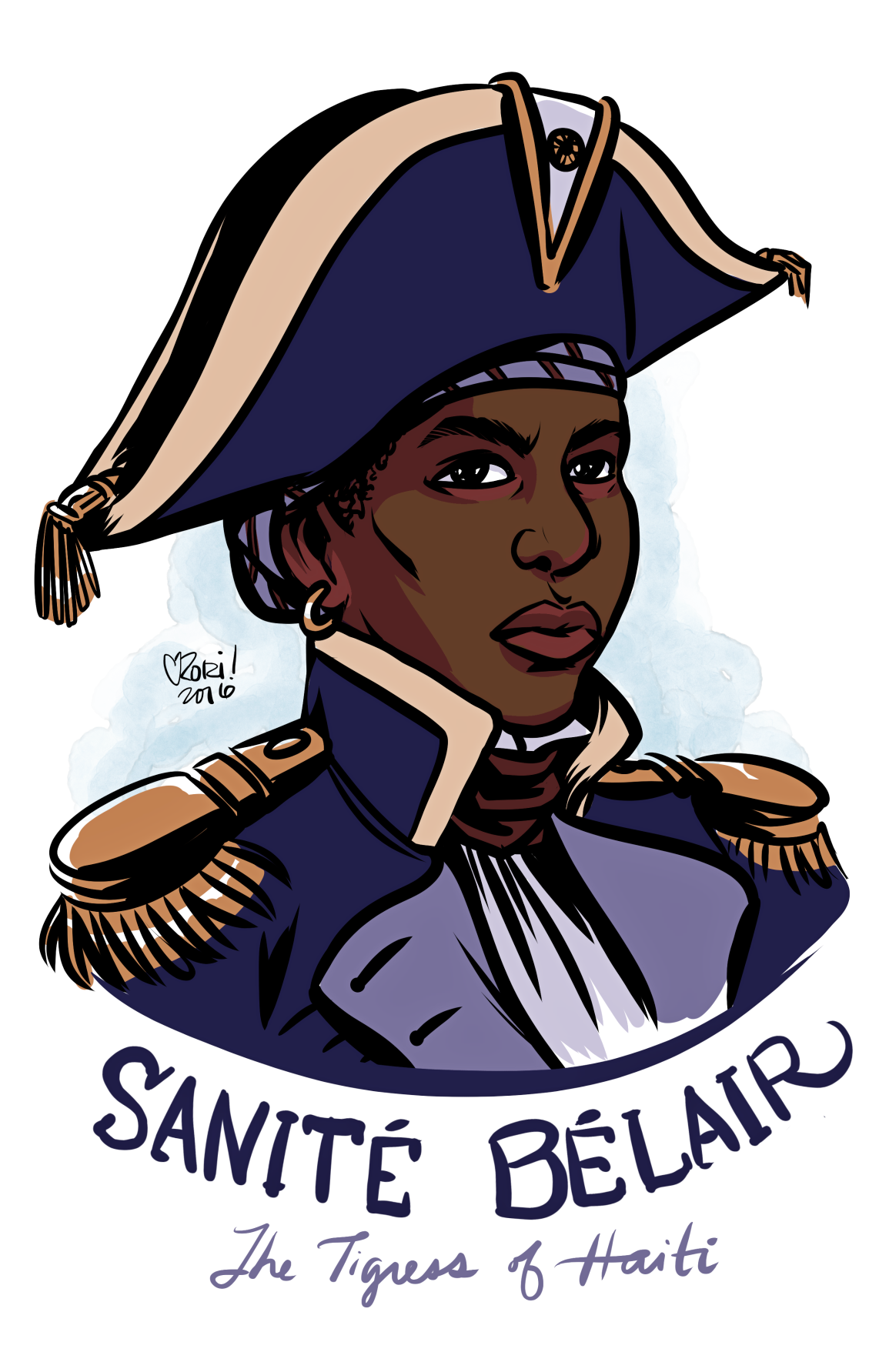

Anacaona on Hispaniola; and Sanité Bélair
and Cecile
Fatiman in Haiti played important roles in the anti-colonial struggles
in their countries.
1500s
– 1800s:
The anti-colonial, anti-slavery struggle in the Americas begins when
European colonization commences at the end of the 15th century. It is
given tremendous impetus at the beginning of the 19th century with the
triumph of former enslaved Africans over the French in the Haitian
Revolution in 1804. Women play a central role in all aspects of this
revolt -- organizing other slaves to refuse life-threatening work; as
practitioners of spiritual rituals which inspire others to the cause of
freedom; through intelligence work and combat against the
French. Shortly after Haiti wins its independence and throws off
the yoke of slavery there is a surge against the Spanish in the
colonies they have established. Women also play crucial roles in these
rebellions, including as leaders in combat, and display exemplary
bravery.
|
|
Anacaona is the first woman in the Americas to rise up against the Spanish conquerors. She was born in 1474 on the island of Hispaniola (today Haiti and the Dominican Republic), where Columbus first sets foot in December 1492. When she learns of the colonialists' abuses of Caribbean women, she leads the people of Xaragua in resistance against the Spanish. Xaragua remains the only rebellious territory when Ovando (the new Spanish governor) arrives in Hispaniola in 1502. Anacaona is pursued by Ovando for six months. When she is captured, he offers to spare her life if she will become his concubine.She refuses and is hanged publicly in 1504 at 29 years of age.
"Nanny" also known as "Queen of the Maroons," born in what is today Ghana in Africa, leads a community of formerly enslaved Africans in the hills of Jamaica in the early 18th century, known as the Windward Maroons. She organizes raids on British plantations that liberate hundreds from slavery who go on to fight against the British colonialists. She is a national hero of Jamaica, celebrated for her success as a leader, military tactician and strategist.
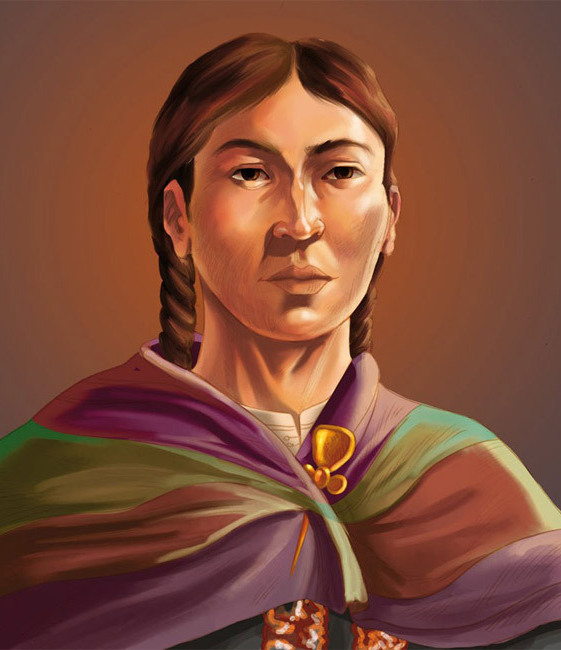
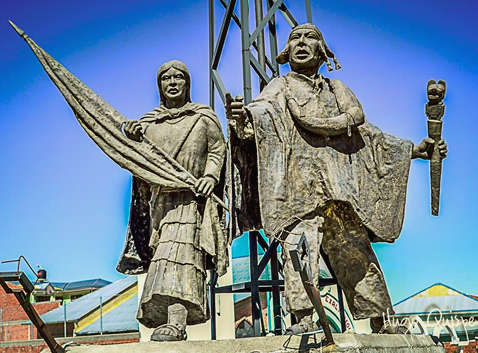
Bartolina Sisa; statue of Sisa and Tupac Katari in El Alto, Bolivia
Bartolina Sisa, an Aymara woman, fights side by side with her husband, the leader Túpac Katari, and his sister Gregoria Apaza. They lead an army of 40,000 in an Indigenous rebellion against the Spanish colonialists in upper Peru (today Bolivia), laying siege to the city of La Paz for 184 days in 1781. Only after more colonial troops arrive from Lima and Buenos Aires do they retreat. Sisa and Katari are betrayed and captured. Sisa is brutally tortured but never gives up any information. After being forced to witness her husband being publicly drawn and quartered, she is put to death in a similarly gruesome fashion by the colonial authorities less than a year later on September 5, 1782. Her head and limbs are then put on display in various Indigenous villages as a warning to others. In Bartolina Sisa's honour, September 5 is recognized as International Day of the Indigenous Woman.
Juana Azurduy de Padilla; Micaela Bastidas
Micaela Bastidas is an advisor to her husband, the Inca independence leader Tupac Amaru II as well as a revolutionary leader in her own right. She commands a battalion of insurgents and is known as a daring and superior military strategist. In 1781, after a failed uprising, she is captured by the Spanish and executed in a public square, along with her husband and one of their sons, for rebellion.
Maria Andrea Parado de Bellido, a Peruvian Indigenous revolutionary, passes information to patriot forces to aid in their fight against Spanish royalists. Captured and brought before a firing squad in 1822, she rejects a last minute offer by her captors to spare her life if she informs on her collaborators, declaring "I am not here to give you information, but to sacrifice myself for the cause of freedom."
Juana Azurduy de Padilla, is a guerrilla fighter who alongside her husband, Manuel Ascencio Padilla, battles for Bolivian independence. She is noted for her strong support for and military leadership of the Indigenous people of Upper Peru, earning the rank of Lieutenant Colonel. During an 1815 battle at Pintatora, she leaves the battlefield to give birth to her fourth son, returning hours later to the front lines to rally her troops, and personally captures the standard of the defeated Spanish forces.
Manuela Saenz; Maria Andrea Parado de Bellido; painting of "La Pola" shows her defiance in the face of death
In Colombia, Policarpa "La Pola" Salavarrieta is a brave and effective spy for the revolutionary forces, reporting on the loyalist forces and turning their soldiers to the cause of independence. She is captured in 1817 at 22 years of age and sentenced to death for high treason. Her hands bound, La Pola walks to her death accompanied by two priests. Instead of repeating the prayers they entreat her to recite to save her soul, she curses the Spaniards and predicts their coming defeat. Her last words before the firing squad are defiant ones to rally her comrades-in-arms: "I have more than enough courage to suffer this death and a thousand more. Do not forget my example." La Pola is a national hero of Colombia. The anniversary of her death, November 14, is celebrated as the official Day of the Colombian Woman.
Ecuadorean-born revolutionary heroine Manuela Sáenz joins her companion, the Liberator Simón
Bolívar, on the battlefield in the 1820s and plays an important political
role during the wars to liberate New Granada (today Venezuela, Colombia
and Ecuador) from Spanish colonial rule.
Mural honours Gertrudis Bocanegra’s sacrifice for Mexican independence in public square named after her in Morelos, Michoacán, Mexico; Maria Quitéria de Jesus
Gertrudis Bocanegra joins the Mexican war of Independence (1810-1821) during its earliest days. She is a messenger who helps form a communications network between the principal locations of the rebellion. She is captured in 1817 and subjected to torture to reveal the names of other rebels, which she steadfastly refuses to do, and is executed for treason by a firing squad.
Maria Quitéria de Jesus from Bahia, Brazil fights in the War of Independence against Portugal (1822-24) in a man’s uniform. She is promoted to Lieutenant and decorated with the Imperial Order for her bravery and skills and is recognized as a national heroine of her country.
Ana Betancourt; Juana Saltitopa.
Juana de la Merced Trinidad (1815-1860), better known as Juana Saltitopa, a Dominican activist and military woman, is recognized as a symbol of female heroism for her efforts during the War of Independence.
Ana Betancourt, a fighter for Cuban independence, in 1869 addresses the Constitutional Assembly of Cuban patriots at Guáimaro and declares on the occasion of the proclamation of Cuba's first insurgent, anti-colonial constitution: "Citizens: the Cuban woman waited patiently and resigned in the dark and quiet corner of her home for this sublime hour, for a just revolution to break her yoke and unleash her wings. [...] You have destroyed slavery based on color by emancipating the slave. The time has come to liberate the woman!"
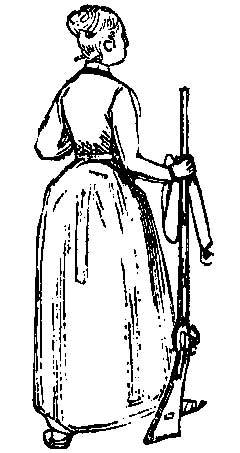


Patriot woman; banner at public meetings in spring 1837; Julie Papineau
|
|
1837-38: Women take their place alongside men in the Rebellion of 1837 to establish the nation of Quebec and fight against British colonial rule. Women like Emily Boileau-Kimber play a crucial role at public meetings in the spring of 1837, prior to the Rebellion. Other notable women include Julie Papineau, wife of Louis-Joseph Papineau, leader of the Patriot Party. She is a political person in her own right and takes part in founding a committee of Patriot women. When the armed struggle begins, women help to cast the bullets and manufacture gunpowder cartridges.
Madame Masson and Madame Dumouchel, among the most ardent of the Patriots, design and weave the first Quebecois flag, planted by St. Eustache fighters in December 1837. The women are renowned for their outstanding compassion in treating all casualties of the conflict, regardless of the side they are on. Emile Gamelin becomes known for providing aid to political prisoners and captured rebels.



Harriet Tubman (left 2 photos); Sojourner Truth
Sojourner Truth is an African American abolitionist and women's rights activist born into slavery in New York State as Isabella Bomfree in 1797. She is sold at auction at the age of 9 and then twice more. She escapes with her infant daughter in 1826, takes the name Sojourner Truth and devotes her life to the abolition of slavery, political rights for women and prison reform. She is best known to some for a speech she delivers on racial and gender inequalities at the Ohio Women's Rights Convention. One of the foremost leaders of the abolitionists, she insists that the abolitionist community must fight for civil rights for black women as well as men. Almost 100 years before the civil rights movement in the U.S., in 1865 Truth attempts to force the desegregation of streetcars in Washington, DC, by riding in cars designated for whites.
Born around 1822, Harriet
Tubman is an African American abolitionist who escapes slavery and the
brutal treatment that left her with a permanent head injury and partly
deaf and becomes known as the most famous "conductor" on the
Underground Railroad, the secret network of safe houses used to bring
fugitives from slavery north. She returns to the south year after year
to act as a guide to people escaping slavery. She is never caught
despite the $10,000 reward offered for her capture. During the Civil
War she
works for the Union Army as a cook and nurse, and an armed scout
and spy. The first woman to lead an armed expedition in the war, she
guides the Combahee River Raid in June 1863, which liberates more than
700 slaves in
South Carolina. After the war Tubman joins the work for women's
suffrage. When she dies at the age of 93 she is buried with military
honours at Fort Hill Cemetery in Auburn, New York.
|
|
Mary Ann Shadd Cary, born in 1823 in Delaware, is an anti-slavery and women’s rights activist and the first black woman to found a newspaper in North America. In 1850 when the U.S. Congress passes the Fugitive Slave Law aimed at discouraging assistance to fleeing slaves and ordering their arrest, Shadd moves to Canada, quickly joined by the rest of her family. In 1858, her father Abraham becomes the first black man elected in Canada, winning a seat as a councillor in Ontario’s Raleigh Township. In Windsor, Shadd creates a racially integrated school, committed to the idea of fighting racism through education. She also founds and edits a weekly anti-slavery newspaper, The Provincial Freeman. It is the first newspaper to give a voice to African-Americans. She publishes it until 1861 in Southern Ontario. After the Civil War, Shadd returns to the U.S. where she becomes the second African American woman to obtain a law degree and joins the National Woman Suffrage Association, campaigning alongside Susan B. Anthony and Elizabeth Cady Stanton.

 Apache warrior
Lozen; Northern Cheyenne warrior Buffalo Calf Road Woman
Apache warrior
Lozen; Northern Cheyenne warrior Buffalo Calf Road Woman
1849-1886: The Apache Wars, between the United States and various Apache nations take place during this time, an especially intense period in the anti-colonial wars that run from the 18th to 20th century. Among the leaders of the Apache is the woman warrior Lozen. She is the sister of an important chief, Victorio, who on one occasion describes her as follows: "Lozen is my right hand ... strong as a man, braver than most, and cunning in strategy. Lozen is a shield to her people." According to a warrior named Kaywaykla, she was one of the more skillful of the Apache: "She could ride, shoot, and fight like a man; and I think she had more ability in planning military strategy than Victorio did."
1876: A series of battles take place, later known as the Great Sioux War. During one conflict, the Battle of the Rosebud, Northern Cheyenne woman warrior Buffalo Calf Road Woman saves her wounded brother Chief Comes in Sight. Her bravery motivates the rest of the Cheyenne to victory. Later that year, she fights along with her husband Black Coyote in the famous "Battle of Little Bighorn." Northern Cheyenne oral tradition credits her with knocking Lieutenant Colonel George Armstrong Custer off his horse before he dies at Little Bighorn.
Role of Women Advances the
Striving
for Political Empowerment
for Political Empowerment
Chartist meeting in 1848 on Kennington Common.
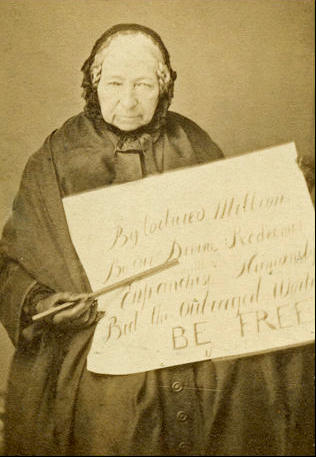
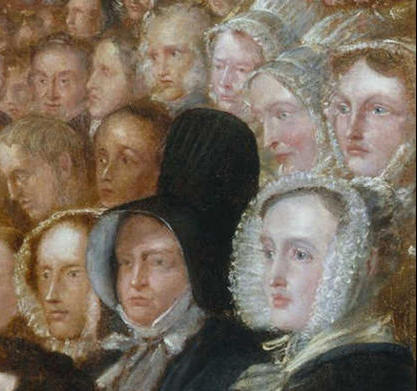

Anne Knight; 1840 world anti-slavery convention; Elizabeth Pease
1836: Chartism emerges as a working class movement in Britain to gain political rights and empower the working class, based on democratic principles, while also fighting corruption. While one of its main aims is universal suffrage for all men, irrespective of property ownership, women play a leading role. They include women well-known in the movement to abolish slavery in the British Empire, a number of them being Quakers. Many go on to become leaders in the movement for women's suffrage that develops in the late 19th century.
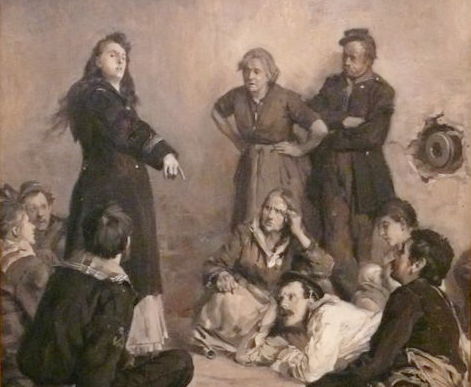

Louise Michel (standing on left); drawing of women of the Paris Commune
 1871: Women play an
outstanding role in establishing and defending the Paris Commune which
is the first revolutionary seizure of state power by the proletariat
and one of the most glorious pages in the history of the international
working class. With the Union of Women as their leading organization,
they organize working
women at the barricades, ambulance stations and canteens. The Women's
Union mobilizes
them as well to fight for women's emancipation. Each district of Paris
has Union committees for recruiting militant working women.
1871: Women play an
outstanding role in establishing and defending the Paris Commune which
is the first revolutionary seizure of state power by the proletariat
and one of the most glorious pages in the history of the international
working class. With the Union of Women as their leading organization,
they organize working
women at the barricades, ambulance stations and canteens. The Women's
Union mobilizes
them as well to fight for women's emancipation. Each district of Paris
has Union committees for recruiting militant working women.
Nathalie Lemel, a member of the Union of Women, calls on women to join the work: "We have come to the supreme moment, when we must be able to die for our Nation. No more weakness! No more uncertainty! All women to arms! All women to duty! Versailles must be wiped out!"
Another outstanding woman fighter is Louise Michel of the Montmartre Vigilance Committee, who is elected its president. The committee holds workshops, recruits ambulance nurses, gives aid to wives of soldiers, sends speakers to the clubs, and more. She serves as a fighter and medical worker in the 61st Battalion of Montmartre.

Women from Manitoba, Saskatchewan, and Alberta won the right to vote
provincially in 1916, before the eastern provinces, while federally
some women were granted the right to vote in 1917, with most
non-Indigenous women gaining full suffrage by 1918.
1904: The
International Woman Suffrage Alliance is founded in Berlin. By this
time, women have already been fighting for the universal right to vote
for decades, in concert with affirming their role in all the important
issues of the day, such as the abolition of slavery and the defence of
workers' rights. Women of property are permitted to vote in the Isle of
Man in 1881. Women in the then-British colony of New Zealand are
granted the right to vote in 1893. In Australia, women progressively
gain the right to vote between 1894 and 1911. In Canada, some women are granted the right to vote federally in 1917, with most
non-Indigenous women gaining full suffrage by 1918. In Britain and
Germany women can vote by 1918; Austria and the Netherlands by 1919;
and the United States in 1920. In Quebec, 2020 marks the 80th
anniversary of women's suffrage which is not won until 1940.
Indigenous women and men covered by the colonial Indian Act in
Canada are not able to vote until 1960.

Council of the Quebec suffrage organization, Ligue des droits de la
femme.
Women in Winnipeg with Women's Political
Equality League petitions; Emily Howard Stowe, founder of the Canadian
Women's Suffrage Association.

Irene Parlby, Louise McKinney, Nellie McClung, Henrieta Muir Edwards
and Emily Murphy, known as the "Famous Five," win in 1929 a court case
they initiate to have women legally recognized as persons in Canada.
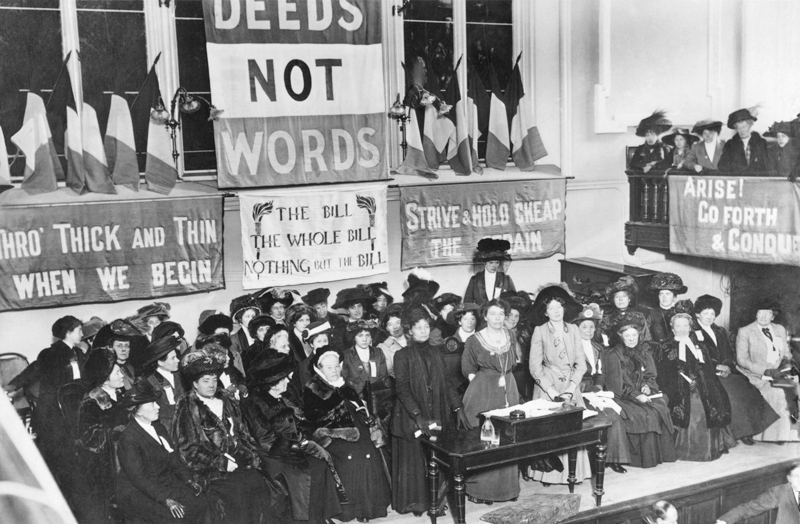
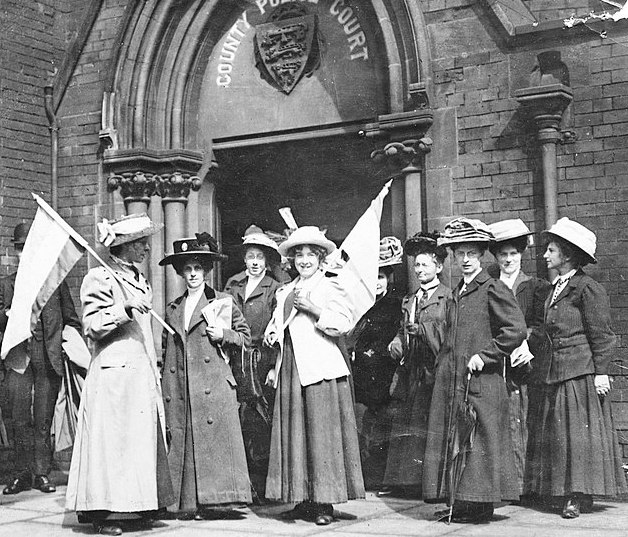
Meeting of suffragettes in England in 1908; 1911 demonstration outside
police court.
Suffrage movement in the U.S.
Women Fighters Against Fascism in the Spanish Civil War and World War II

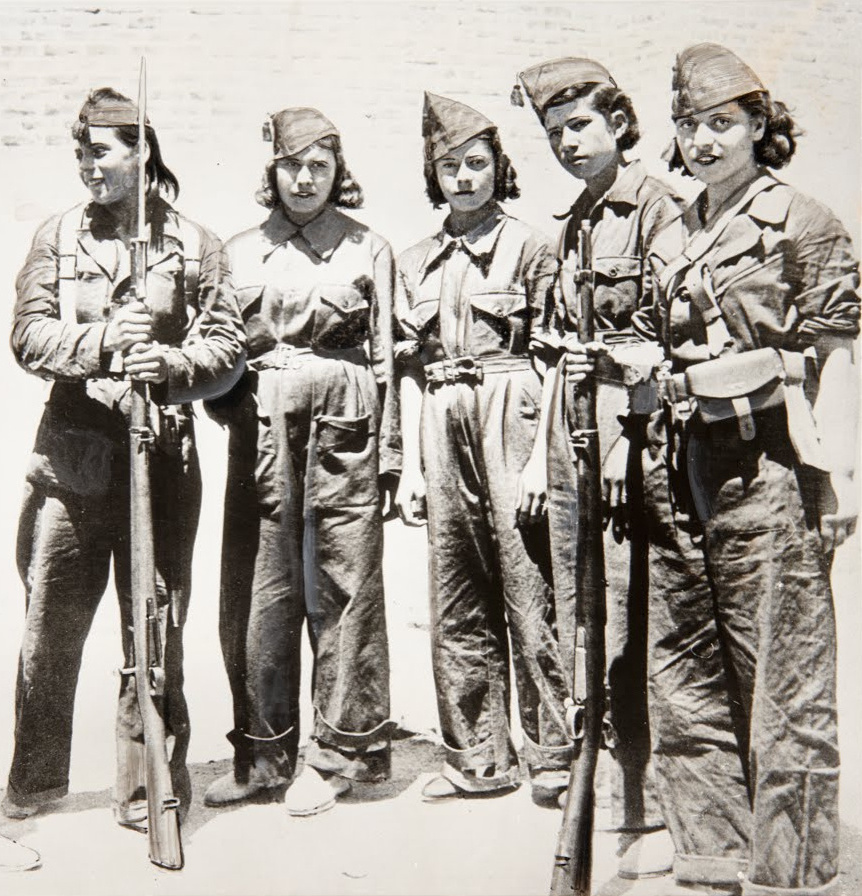
Women made outstanding contributions on the republican side during the
Spanish civil war.
1936-1945: Women make outstanding contributions to the Republican side during the Spanish Civil War (1936-39) and to defeating Nazi fascism in the Second World War (1939-45). Women from virtually all the countries of Europe and Eurasia, joined by women from all the Americas, play vital roles as spies, couriers, wireless operators, grenade and bomb makers, medics, rescuers, saboteurs, guerrilla fighters, regular soldiers, snipers and pilots. Many undergo torture without ever giving up any information. Many are executed -- by hanging, the guillotine, firing squad or the bullets of a single executioner, in the Nazi crematoriums, through beatings or the harsh conditions of Nazi prison camps.
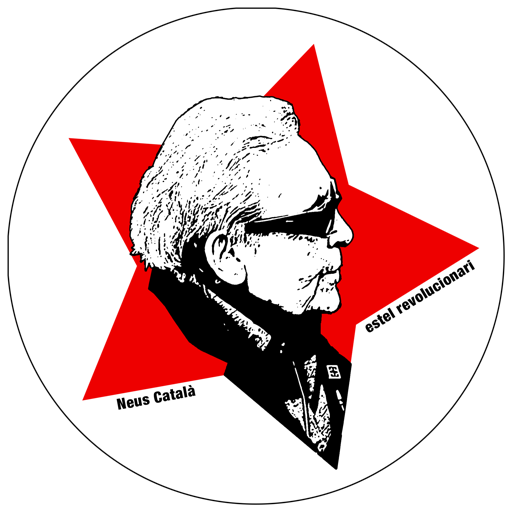

Neus Català is a Catalonian woman and a
communist
who, when Franco's troops invade Barcelona in 1939, leads 200 orphans
of the Spanish civil war across the snow-covered Pyrenees mountains to
France. She then stays in France to fight Nazi fascism during World War
II with the French resistance. She is eventually captured by the
Germans and deported to the Ravensbrück concentration camp for
women and then to a slave labour camp where she and her coworkers
sabotage the bullets and bombs they are forced to produce in a
munitions factory. She later writes in a memoir, “We women
were
not assistants, we were fighters.” Neus Català
died on
April 13, 2019 at 103 years of age.

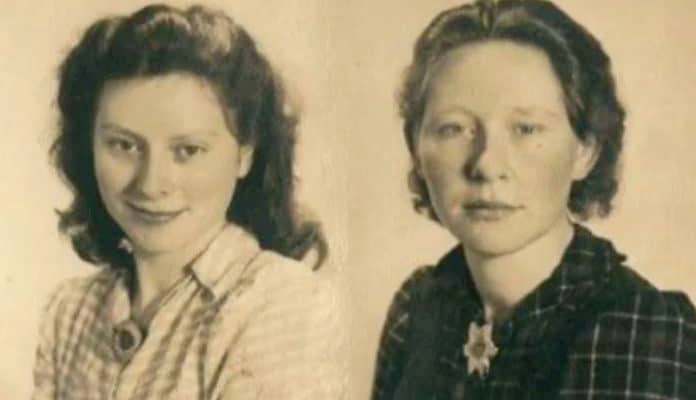
Tina Modotti; Freddie and Truus Oversteegen
Assunta Adelaide Luigia Modotti Mondini, known as "Tina Modotti," was born in Udine, Friuli-Venezia Giulia region, Italy in 1896 and died in Mexico in 1942. She was a photographer and a revolutionary communist who contributed to the fight against fascism, working with International Red Aid (SRI). Using different pseudonyms, she travelled to countries under fascist rule to assist the families of political prisoners. During the Spanish Civil War she organized the evacuation to Mexico and the Soviet Union of children orphaned by the war. In 1939, when Barcelona was occupied by Franco’s fascist forces she managed to flee to Mexico, continuing her work there with refugees of the Spanish civil war.
In Holland, in 1940, the young sisters Freddie and Truus Oversteegen join their mother, a communist, in distributing illegal newspapers and pamphlets for the resistance. By 1941 the teenagers begin taking on more dangerous missions: smuggling Jewish children out of the country, blowing up bridges and railroad tracks, and luring, ambushing and killing German Nazis and their Dutch collaborators.
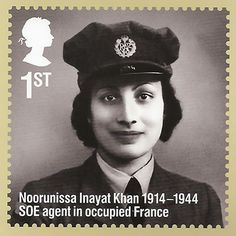


Stamp of Noor Inayat Khan; statue of Khan; Olga Benário
Prestes
Noor Inayat Khan is born in 1914 and grows up in France. Her family moves to Britain in 1940. Wanting to contribute to defeating Hitler fascism, she joins the Women’s Auxiliary Air Force and receives wireless training. In 1943 she is inserted into Nazi-occupied France to work as a British secret agent with the Prosper Network of the French Résistance. The network is heavily infiltrated, however, resulting in most of its members being arrested. A posthumous citation for her moral and physical courage said Khan "refused … to abandon what had become the principal and most dangerous post in France, although given the opportunity to return to England, because she did not wish to leave her French comrades without communications and she hoped also to rebuild her group." Within a few months Khan is betrayed and taken prisoner by the Gestapo. Subjected to rough interrogation she gives only false information. She is then sent to a prison camp in Germany and eventually to Dachau where she and three other women agents are executed in September 1944. Khan’s last utterance before being shot is “Liberté!”
Olga Benário Prestes is born in 1908 to a Jewish family in Munich. At 15, she begins working with the underground German Communist Youth Organization. Following her arrest on charges of "preparations for high treason" and helping break a comrade out of jail, she flees Germany for the Soviet Union where she receives military and strategic training. In 1934, she is tasked with accompanying and providing security for Brazilian communist Luis Carlos Prestes on his return to Brazil from exile. They arrive in Rio de Janeiro in the midst of an uprising against dictator Getulio Vargas, which the Communist Party is supporting. Benário and Prestes are arrested and in September 1936 she is extradited to Nazi Germany. In Ravensbrück prison camp she continues her revolutionary anti-fascist work in a clandestine Communist prisoners’ network. In 1942 she is sent to the gas chamber along with hundreds of other political prisoners.
In the Soviet Union, 800,000 women go directly to the Eastern Front during the Great Patriotic War, as World War II is known. They serve as regular troops in the Red Army and in other combat capacities.
Red Army women snipers prepare to deploy to the
front; women production workers at Stalingrad tractor factory.
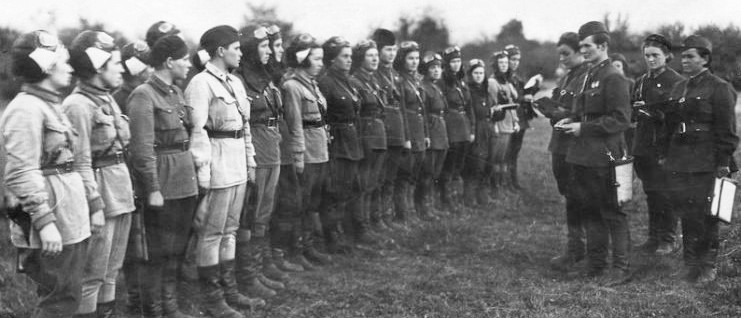
Red Army 588th night bomber regiment
Two Ukrainian women who distinguish themselves are sniper Lyudmila Pavlichenko, who records 309 enemy kills, and pilot Nadezhda Popova, a member of the feared night bomber squadron the Germans call "Night Witches." Popova flies 852 dangerous low altitude missions in an old plywood biplane and survives being shot down numerous times.
In 1941, 18-year-old Zoya Kosmodemyanskaya joins a sabotage unit engaged in guerrilla activities against Nazi forces that have occupied a Soviet village. She is captured while on a mission and tortured but refuses to reveal any information. The next morning she is hanged in front of local villagers, but not before declaring from the gallows, "I'm not afraid to die, comrades. It is happiness to die for one's people!" And to her German executioners: "You hang me now, but I'm not alone. There are two hundred million of us. You can't hang us all. They will avenge me." Zoya is the first woman to be declared a Hero of the Soviet Union during the war and becomes a popular symbol of the resistance.
Teenage girls Zoya Kosmodemyanskaya (top) in the Soviet Union and Lepa Radić (bottom right) in Yugoslavia who joined the fight against Nazi forces, defiantly faced their executioners. Zoya became a popular symbol of the resistance (portrait and statue bottom left and centre).
In 1943, 17-year-old Lepa Radić, a Bosnian Serb communist and member of the Yugoslav Partisans, is captured while protecting women and children escaping Nazi forces by firing a barrage of ammunition at advancing SS troops. She is hanged after being tortured and revealing nothing. On the gallows she entreats her people to fight for their freedom and not to surrender to the evildoers. When offered a last minute pardon if she will reveal the names of her comrades and leaders, Radić replies that she is not a traitor to her people and her comrades will reveal themselves when they avenge her death.
Other women, like Mala Zimetbaum, a Jew from
Belgium, also faced their executioners with similar taunts and acts of
defiance, earning themselves an even more cruel death. Mala was the
first woman to escape from Auschwitz-Birkenau prison camp but was
caught and executed.

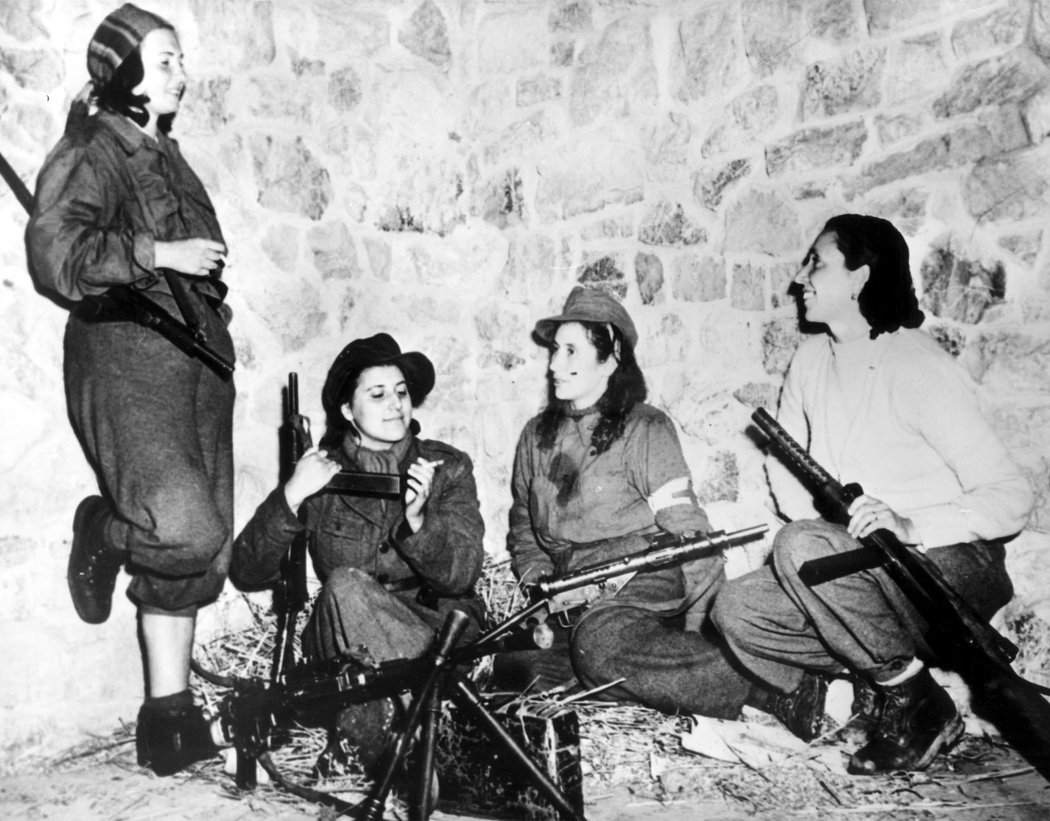
Partisan fighters in Ukraine, Russia, Poland, Belarus,
Yugoslavia and Italy.
(With files from TML Archives, HBRC Archives, Wikipedia, Peoples' Dispatch, Global Research, ww2today, Upworthy.com, Allthatisinteresting.com)
(To access articles individually click on the black headline.)
Website: www.cpcml.ca Email: editor@cpcml.ca
